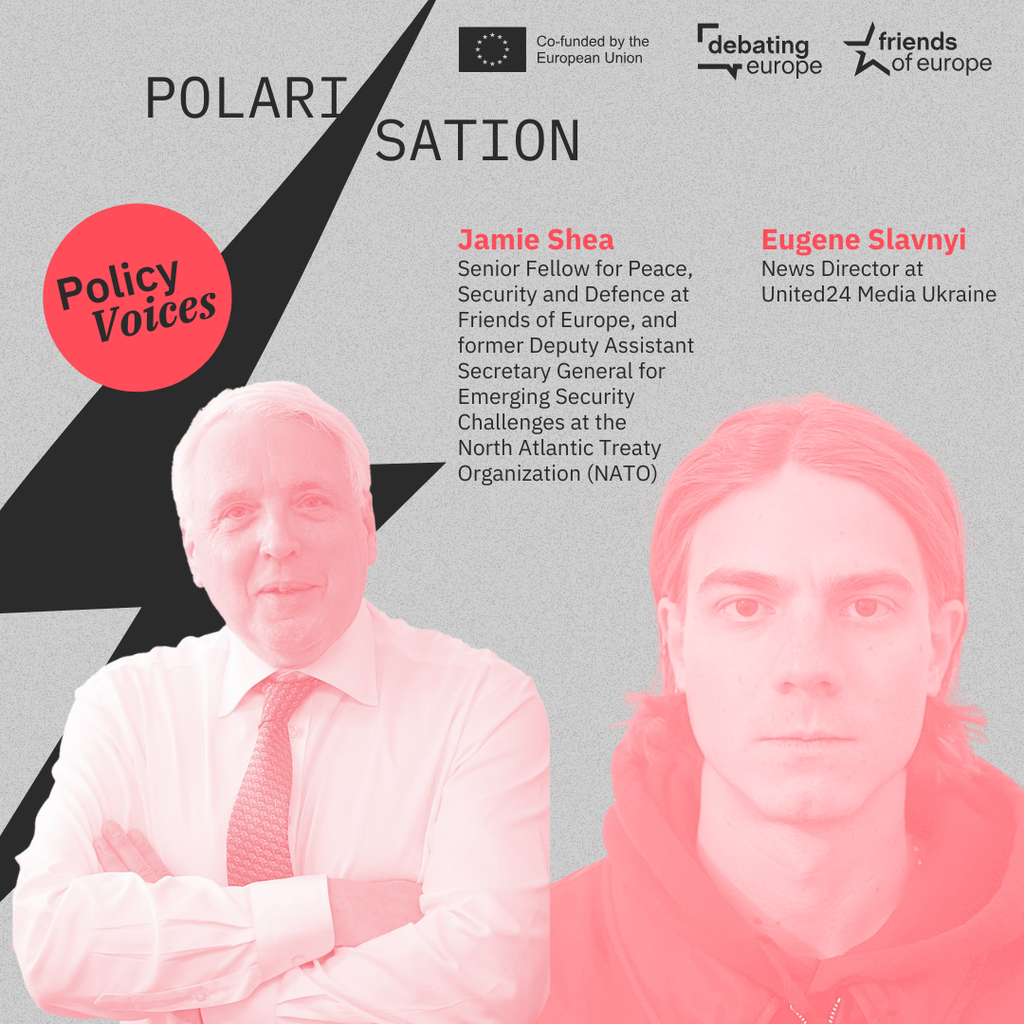From ambition to action: building Europe’s Defence Union
Past event In person

- Area of Expertise
- Peace, Security & Defence

Senior Advisor at Defend Democracy, Lecturer at the Institute for Security Governance and former Senior Fellow at Friends of Europe.
The efforts of NATO and the European Union to address hybrid warfare are unlikely to succeed. While promising, their efforts are neither broad enough in scope nor sufficiently integrated.
This is because both NATO and the EU see hybrid warfare as a new set of techniques for aggression rather than what it really is: a comprehensive offensive approach. In the meantime, Russia and China have been using hybrid warfare to expand their influence and gain territory.
The so-called comprehensive approach is a way to achieve a common understanding and approach among all actors of the international community. This is possible through the coordination of political, development and security efforts.
The comprehensive approach focuses on building a shared understanding of the problem, developing a shared overarching vision of the solution and facilitating coordination of effort while respecting the roles and individual mandates of multiple entities.
The concept of hybrid warfare, in turn, is broadly defined as the mix of conventional and unconventional, military and non-military, overt and covert actions employed in a coordinated manner to achieve specific objectives while remaining below the threshold of formally declared warfare.
Since 2014 Russia has used these broad-spectrum tactics to wrest Crimea from Ukrainian control and subsequently annex it into the Russian Federation. More recently, China has been employing a similar approach in the South China Sea.
Looking through the military and security lens, hybrid warfare appears to target critical vulnerabilities and seeks to create ambiguity to hinder swift and effective decision-making.
Both NATO and the EU see hybrid warfare as a new set of techniques for aggression rather than what it really is: a comprehensive offensive approach
Taking a broader perspective, hybrid warfare is actually a comprehensive approach in the offence. While the comprehensive approach seeks to create space for friendly actors to strengthen governance, hybrid warfare seeks to shrink it. While the comprehensive approach seeks to heal a society’s divisions and seek reconciliation, hybrid warfare targets a society’s deepest historical wounds to make them bleed again.
There are a wide range of applicable measures in hybrid campaigns: from cyber-attacks on critical information systems and the disruption of critical services, such as energy supplies or financial services, to undermining public trust in government institutions and exploiting social vulnerabilities. Once a state is weakened sufficiently, the aggressor’s strategic aims can, if necessary, be consummated by the use of conventional or paramilitary forces.
Both Russia and China have employed hybrid warfare in recent years, often successfully achieving their political aims.
It was used by Russia against Estonia in 2007, Georgia in 2008, and eastern Ukraine in 2014. China has gradually expanded its control and influence in the South China Sea by constructing artificial islands, sending armed fishermen to patrol claimed territorial waters, and declaring an air identification zone. It is easy to conclude that their next steps will be to establish military bases on these islands, thereby cementing their claim to the territory ‒ without firing a shot.
In both cases, the countries applied a full spectrum of economic, legal, informational, cyber and paramilitary means to achieve their objectives in a slow and ambiguous manner, so as to not cross any threshold that would trigger collective military action in response. As recent history tells us, hybrid warfare lowers the political price for aggression, making regime change and territorial annexation possible ‘on the cheap’.
While Russian hybrid warfare does present a new challenge to NATO, the EU, and their member states, they are in a much better position to address it if they work together effectively.
In response to Russian hybrid warfare in 2014, NATO adopted the Readiness Action Plan (RAP) as a means of responding rapidly to new threats as they present themselves along the eastern and southern flanks.
In December 2015 NATO adopted a Hybrid Warfare Strategy, and a few months later the EU adopted its Joint Framework for Addressing Hybrid Threats. Both documents speak of working in conjunction with a variety of actors in order to improve resilience, security and continuity of governance in the face of hybrid threats.
So, what would a comprehensive approach to hybrid warfare look like?
It is hard to know for certain unless a diverse comprehensive approach working group can work on it together, but building on the previous work on hybrid warfare within NATO, the EU and their member states, a comprehensive approach could seek to more coherently contain the Russian use of organised crime as an instrument of state power.
A comprehensive approach would address how to prevent Russia from moving money and buying influence within the European countries. It would rely on many of the same techniques used to contain and disrupt organised crime as the Kremlin, like organised criminal groups, relies on the use of the legitimate economy to move money to achieve many of its aggressive aims.
Hybrid warfare appears to target critical vulnerabilities and seeks to create ambiguity to hinder decision-making
The inclusion of real estate, business law, and transparency expertise could help to identify ways to thwart the Russian use of front companies and real estate holdings in major European capitals, which launder money and support destabilising elements. In many cases, transparency can prove to be a helpful offset.
To be prepared for extreme cases, contingency plans could be formulated to ban Russian financial institutions from the SWIFT network that processes global secure financial transactions.
A comprehensive approach to address Russian hybrid warfare will require a more extensive assessment phase than when conducting this process for crisis response. This involves a brutally honest self-assessment of the weaknesses, vulnerabilities and historical grievances of the government as well as the society. By seeing our vulnerabilities and weaknesses through our adversaries’ eyes, we will be more able to target our resilience efforts and leave far fewer blind spots.
It is also important to recognise the vital role of law enforcement, the private sector (including banks and financial institutions) and strategic communications, as well as cyber, media and energy sector collaboration, but also to integrate their efforts with broader economic, communication and security measures.
Good progress has already been made on addressing Russia’s ability to use of energy as a weapon. However, it remains unmoored from a broader comprehensive approach that includes how to convince Russia to abandon aggression and to reintegrate into the international community as a trusted partner.
Past event In person

Next event

Past event Online

Past event Online





Stay informed
We use cookies and similar technologies to adjust your preferences, analyze traffic and measure the effectiveness of our campaigns. Learn more about our privacy policy.